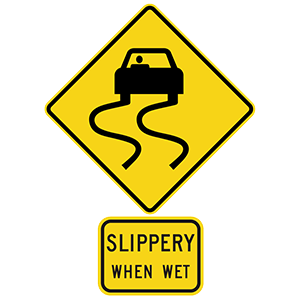2025 Mississippi Permit Test 12
The following questions are from real DMV written tests. These are some of the actual permit questions you will face in Mississippi. Each permit practice test question has three answer choices. Select one answer for each question and select "grade this section." You can find this button at the bottom of the drivers license quiz. For a complete list of questions and answers for Mississippi please visit https://cheat-sheets.dmv-written-test.com/en/mississippi/car.
Number of Tests
Number of Question
Passing Score
17. This sign means:

Explanation
Signs with a red circle and diagonal line over a black symbol indicate that the action represented by the symbol is prohibited. In this case, the sign indicates that left turns are prohibited.
18. How many alcoholic drinks does it take to affect your driving ability?
Explanation
It is not advisable to drive after drinking any amount of alcohol. Even a single drink will affect your ability to drive safely.
19. If you parallel park facing downward on a hill:
Explanation
When parking downhill, turn your front wheels toward the curb or edge of the road. When parking uphill on a road without a curb, turn your wheels toward the edge of the road. When parking uphill on a road with a curb, you must turn your front wheels away from the curb.
20. If it feels like your tires have lost contact with the surface of the road, you should:
Explanation
If it feels like your tires have lost contact with the surface of the road, you should ease your foot off the gas pedal and stay off the brakes. Do not try to stop or turn until your tires are gripping the road again.
21. This sign means:

Explanation
Warning signs are usually yellow with black markings. They alert you to conditions that are immediately ahead. This sign warns that the roadway is slippery when wet.
22. Double solid yellow lane markings mean that:
Explanation
Yellow lane markings indicate a separation of lanes where traffic is traveling in opposite directions. When you see double solid yellow lane markings, passing is prohibited from both directions.
23. Various traffic control devices in construction and maintenance work areas are the color:
Explanation
Orange warning signs are used in and around work zones. Use special caution when you see orange signs, cones, or barriers on a roadway.
24. Driving more slowly than surrounding traffic is:
Explanation
Driving more slowly than other traffic can be dangerous. Drivers behind you may become impatient and will be tempted to take dangerous risks to pass you.
Ranked by best match
